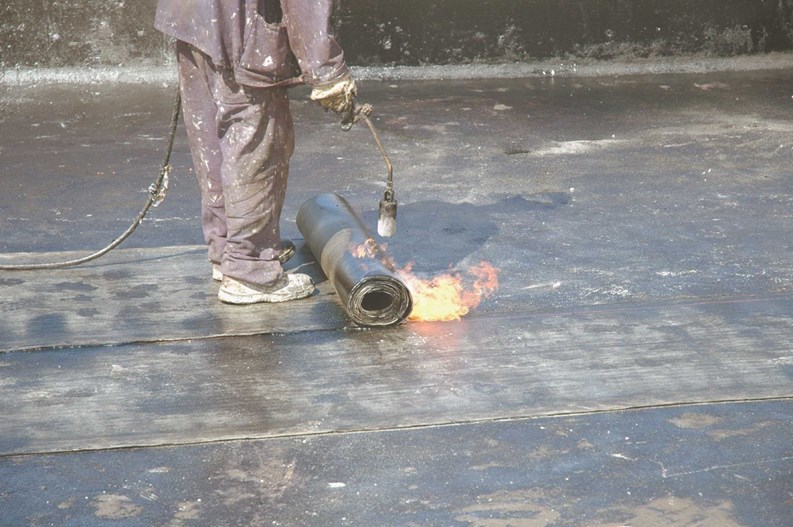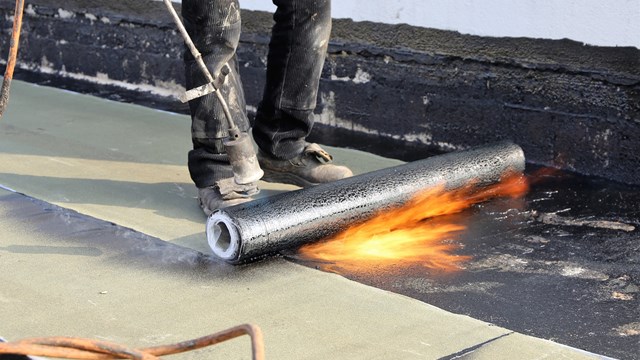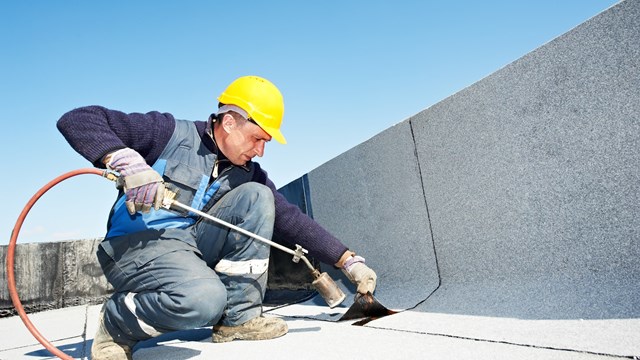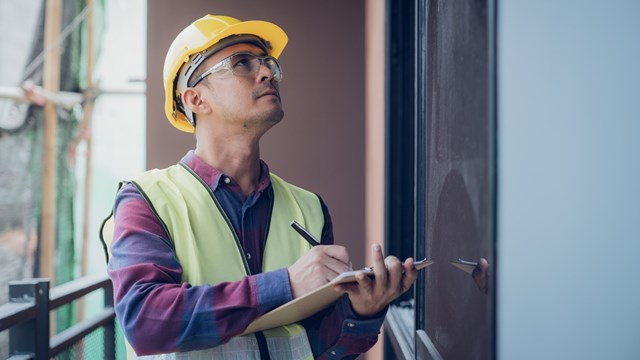You may have a roof over your head—but if that roof isn’t doing its job, you may as well be living on the cold, wet streets of New York City.
Roofs serve as the first line of defense against whatever the skies throw at your building, so it’s crucial for it to be sound and well maintained—leaky roofs can cost thousands of dollars in water damage, and boards and management who ignore their roof problems run the risk of legal exposure, should a shareholder’s possessions and property be damaged by leaks or collapses.
The Roof Truth
Before you build, repair or maintain your roof, you’ll need to know what type of roof you’ve got. In a city where space is at a premium, most apartment buildings in New York sport a flat roof.
That’s not its only perk of being peakless. Flat roofs are more accessible for the fire department and for any repairmen. Plus, they’re more easily maintained than shingled, pitched roofs. Flat roofs aren't completely flat, of course—they do have a slight slope to permit water to easily flow into drainage and plumbing openings—but the angle isn’t drastic enough to make it difficult for people to walk on top.
All those advantages doesn't mean that a flat roof can work miracles. They still have their issues.There are three big problems that can affect flat roofs: Expansion and contraction, ultraviolet rays and moisture.
The roof is at its best when it’s brand new. As soon as it’s installed, a flat roof starts to degrade from the lack of expansion and contraction, say roofing experts. You can even see the degradation in the form of tiny cracks and blisters that make the roof porous. Investing in the best quality materials whenever you hire a contractor to repair or replace your roof will help with this problem, but regular inspections and maintenance can go a long way toward increasing your roof’s useful life.
Fending Off Threats
While a lot of things can damage a roof structure, it’s usually one of a handful of culprits that is to blame when things go wrong.
Ultraviolet rays are one such threat, but one that can be mitigated fairly easily. They can make a roof age much faster, but you can curb the negative effects of rays by applying or—having a roof technician—apply an ultraviolet chemical roof coating, which will make the roof reflect the rays instead of absorbing them.
Moisture is another roof antagonist. There’s nothing you can do to deflect rain, snow and even dew, but you need to make sure the roof is pitched properly to ensure that any water that hits the roof surface never stays long. Have a roof specialist check out your roof to make sure the pitch is slanted at the right angle and is doing its job.
“There’s usually a minimum pitch that goes to a drain,” says James Friedman, president of FixARoof, a Brooklyn roofing contractor. “If it’s not done properly, it leaks severely. The flat roof is one of the hardest roofs to do without having a leak. A lot of people come in and try to be roofing contractors, but they’re not, and they run into a problem and then they’re stuck.”
Once you make sure your roof is pitched properly, you need to make sure that there’s nothing obstructing the drain. That sounds easy enough, but even snow can be a major problem because it can turn into ice, which in turn can cover drains and cause headaches. Roofing professionals stress that every time it snows, you need to remove the snow from the roof immediately. “If the snow is very heavy, the roof could even collapse, and the drains can get iced, and the water can penetrate and melt everywhere,” Friedman says.
Another deadly foe of flat roofs is penetration of the roof membrane, according to John Shenone of Central Construction in Brooklyn. That means anything that passes through the roof or causes a breach in the topmost layer—nails, bolts, railings, staircases, skylights, and the like.
While those are the biggest concerns with roofs, there are other roofing issues that every condo board and condo owner should know about.
Dealing With Decks
One of the growing challenges facing boards and contractors alike especially with a flat roof is the rooftop deck. Airy rooftop social or leisure spaces can add value to just about any building. After all, who doesn’t want to have their own little outdoor space with sunlight and sweeping views of the bridges and skyline?
“As real estate becomes more and more precious, people are trying to maximize their space as much as possible,” says Wayne Bellet, owner of Bellet Construction Co., Inc., based in Midtown Manhattan. “I used to do a small percentage [of deck installations], but now it’s one or the largest things that we do. Even in a bad economy, I put up more rooftop decks now than I have in my entire 32-year professional life.”
In addition to increasing value, roof decks can offer protection against ultraviolet rays and protect the underlying roof membrane—but only if they're installed and drained properly, and are inspected regularly for signs of deterioration.
The additional weight of roof decking poses a major threat to the membrane underneath. “If the membrane isn’t properly prepared to accept the additional weight, that could cause great harm,” he says. “Preparation is key.”
The pros all stress that simply throwing some nice outdoor furniture on top of your building does not a roof deck make. “It’s common for a roof to be damaged by excessive foot traffic when people use it as a patio without installing a proper decking system,” says Shenone.
To avoid major damage to your roof, a professional contractor must lift the deck surface with steel or wooden rods so that it’s not touching the actual roof, says Nick Lefferts, director of operations for Greene Roofing, Inc. in Brooklyn. If you put the deck directly on the roof, and allow people to walk on it, you can also do a lot of damage. “Roofs weren’t made for that," he says. "They were made for keeping the water out of the building. The roof isn’t made for foot traffic, and that can cut holes in it.”
The danger with foot traffic is leaks that could mean major expense. Some buildings don’t realize there's a problem with their existing deck until it’s too late. Friedman recently had to remove an entire deck, rip off a roof and rebuild the whole thing because someone put a small, decorative tree on the deck. The roots slithered out of the pot, went through the roof, and penetrated the membrane, causing severe leakage.
It’s not just rooftop decks that are doing damage, however. The same damage can be done when servicemen or sunbathers take to the roof, according to Artur Freire, a project manager with The Rosenwach Group in Long Island City. But fortunately, there’s an easy solution. Many roofing contractors recommend putting down a walkway—(a protective pad on the roof)—that leads directly to a drain. This way, any repairman can use the walkway to get to the bulkheads and mechanical equipment without touching the roof. If the roof is being used for anything other than service work, those activities should be limited to a designated spot with a raised deck. According to New York City regulations, Freire notes that any rooftop space or deck should be protected by a railing or a parapet wall at least 44 inches high.
Live Long and Prosper
Once the rooftop deck or the walkway is in place, it’s perfectly safe to hang out on your roof, as long as you’ve met with a roofing inspector or an engineer to make sure it can carry the extra weight.
The good news is that if you properly maintain your deck—and the roof itself—the pros say you can go decades, and possibly even an entire lifetime without having to replace it. The most important part is the maintenance, says Freire.
Ideally, a serviceman should inspect the roof every three months, or when the season changes, says Freire. A building maintenance person can do a quick once-over for any glaring problems, but most pros feel that a trained eye is almost always preferable when it comes to spotting any damage or deterioration that may have surfaced since the previous inspection. “We look at the flashings, the masonry and parapet walls, we check for any open seams, or deterioration around railings,” he says.
Drains should also be free from any debris or snow, and there shouldn’t be any spills or dirt on the roof that could soak in and have a negative effect. If you have a rooftop water tank, Freire says to check it for leaks, make sure all access doors are properly closed, and that unauthorized people aren’t walking directly on the roof.
If you do see anything that could be a problem, you should call your roofing professional for an official inspection. These inspections can range from free to a few hundred dollars. Some inspectors, don’t charge their customers for a visit to make sure there’s nothing wrong. Others will charge up to $500 for the service call, so be sure you ask your contractor what his or her policy is prior to having them come out.
While the basic inspection can be done by anyone in the building, it’s best to leave major roof repairs and installation to the professionals, says Freire. The biggest reason for this is because materials manufacturers generally require that their products be inspected and serviced by a licensed or certified professional, or else any warranty on them may be voided.
Once you have the warranty, the roof will usually be insured for 10 to 20 years—but if you try to fix a leaky roof or a cracked board yourself, you may be wreaking more havoc than it’s worth.
“If the leak is under warranty, and you don’t have a certified roofer to do the repair, it would give them a reason to void the warranty," says Lefferts.
Containing Leaks
Spotting a roofing problem is sometimes difficult. Each roof leak is unique, according to CentiMark Corporation, a national roofing contractor that provides a variety of roof repair and replacement services. Certain damage may be visible at the roof surface level while some water damage and will go undetected by an untrained eye. A thorough assessment requires an experienced roofing inspector to investigate and identify the extent and severity of damage to your roof system. A trained roof inspector knows how to examine the critical areas so proper roof repair or replacement can be performed. They can provide a comprehensive evaluation of your building’s roof at critical check-points on the roof system. A thorough roof inspection report should contain: photographs; a detailed written assessment; a cost-effective repair or replacement solution; and an estimate for insurance damage claims.
If you follow the rules and do your inspections and maintain the roof properly, the professionals agree that it should last well beyond its warranty.
With good installation, proper care, and regular maintenance, your building's roof should keep the rain (and everything else) off your heads for many, many years to come.
Danielle Braff is a Chicago-based freelance writer and a frequent contributor to The Cooperator.







Leave a Comment